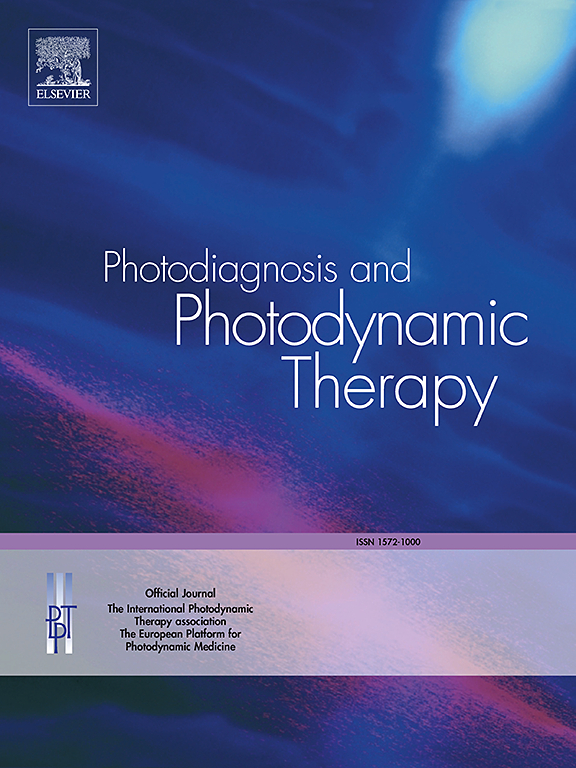激活的黑色素细胞和衰老的胶原纤维预测激光治疗黄褐斑的结果:一项基于光学活检的前瞻性队列研究。
IF 3.1
3区 医学
Q2 ONCOLOGY
引用次数: 0
摘要
背景:黄褐斑面积和严重程度指数(MASI)评分仅评估色素沉着而不是光老化。皮秒亚历山大变石激光(PAL)配合衍射透镜阵列(DLA)可以改善光老化,已被批准用于治疗黄褐斑。对激光后预后的预测是有限的。目的:比较PAL与DLA在黄褐斑病变及其邻近病变中改变的光老化环境,并描述预后的预测因素。方法:采用细胞分辨率全视野光学相干断层扫描(CRFF-OCT)进行光学活检,评估动态变化。用计算机辅助检测(CADe)系统进行定量。结论:使用CRFF-OCT进行光学活检显示,激活的黑色素细胞和衰老的胶原纤维的模式可以作为激光治疗后预后的预测指标。通过减少活化的黑素细胞和修复基底膜,改善了黄褐斑的光老化特性。本文章由计算机程序翻译,如有差异,请以英文原文为准。

Activated melanocytes and senescent collagen fibers predict laser-treated melasma outcomes: An optical biopsy–based prospective cohort study
Background
Melasma Area and Severity Index (MASI) score only assesses the pigmentation rather than photoaging. Picosecond alexandrite laser (PAL) with diffractive lens array (DLA) can improve photoaging and has been approved for melasma treatment. Prediction for post-laser outcome is limited.
Objective
To in vivo compare the photoaging milieu altered by a PAL with DLA in melasma lesions and adjacent perilesions, and to delineate the predictive factors for outcomes.
Methods
An optical biopsy with cellular resolution full-field optical coherence tomography (CRFF-OCT) was set up to evaluate the dynamic changes. Quantification was performed with the computer-aided detection (CADe) system.
Results
The mean MASI score decreased significantly (p < 0.001) in 12 of 15 patients but increased in the other three. An optical biopsy of 74,340 images showed the numbers of activated melanocytes and melanophages were significantly reduced post laser, and the basement membrane (BM) was repaired in melasma lesions, while basal lightening was noted in perilesions. The pre-treatment presence of activated melanocytes was associated with a high regional MASI score (p = 0.013), while the senescent collagen fibers and activated melanocyte patterns were associated with less MASI score improvement (p = 0.005). Senescent collagen fibers (p = 0.002) and baseline BM damage(p = 0.001) were strongly correlated to post-treatment melanophages. The baseline MASI score was not associated with activated melanocyte status or treatment outcomes.
Conclusion
Optical biopsy using CRFF-OCT revealed that patterns of activated melanocytes and senescent collagen fibers can serve as predictive markers for post-laser treatment outcomes. The photoaging characteristics of melasma were improved through the reduction of activated melanocytes and the repair of the BM.
求助全文
通过发布文献求助,成功后即可免费获取论文全文。
去求助
来源期刊

Photodiagnosis and Photodynamic Therapy
ONCOLOGY-
CiteScore
5.80
自引率
24.20%
发文量
509
审稿时长
50 days
期刊介绍:
Photodiagnosis and Photodynamic Therapy is an international journal for the dissemination of scientific knowledge and clinical developments of Photodiagnosis and Photodynamic Therapy in all medical specialties. The journal publishes original articles, review articles, case presentations, "how-to-do-it" articles, Letters to the Editor, short communications and relevant images with short descriptions. All submitted material is subject to a strict peer-review process.
 求助内容:
求助内容: 应助结果提醒方式:
应助结果提醒方式:


